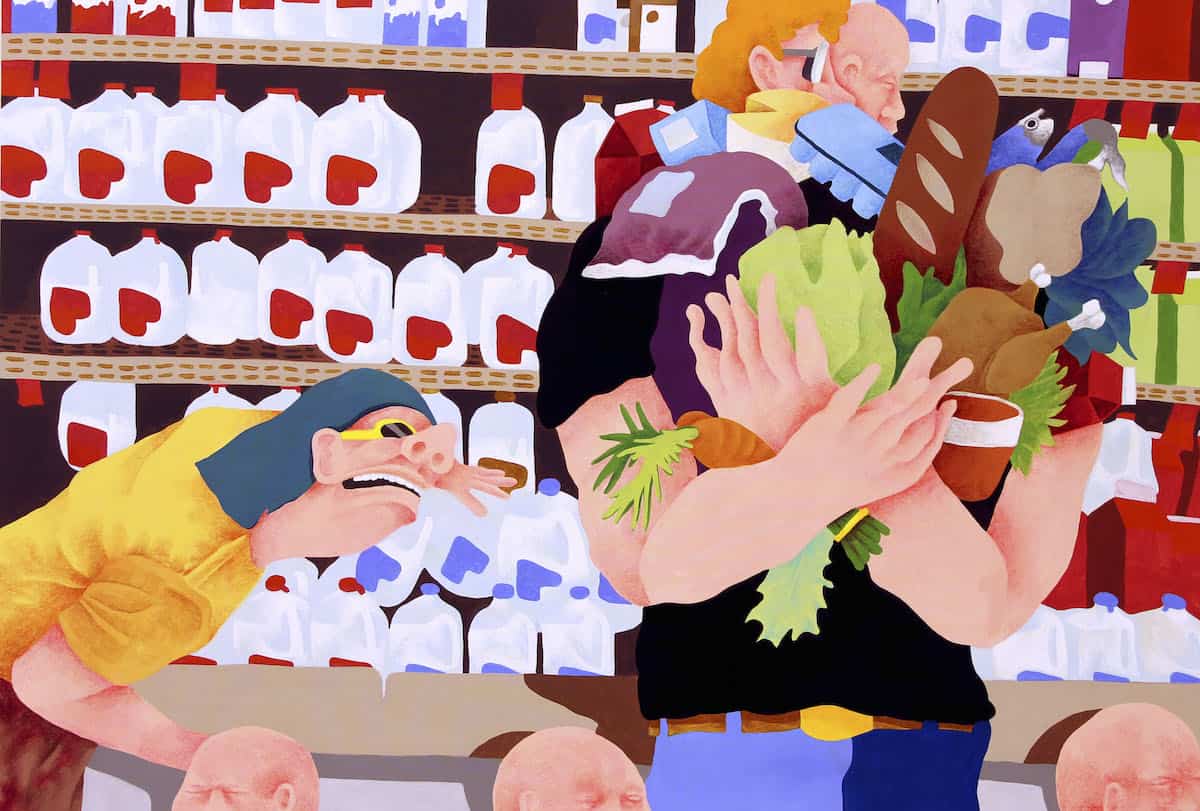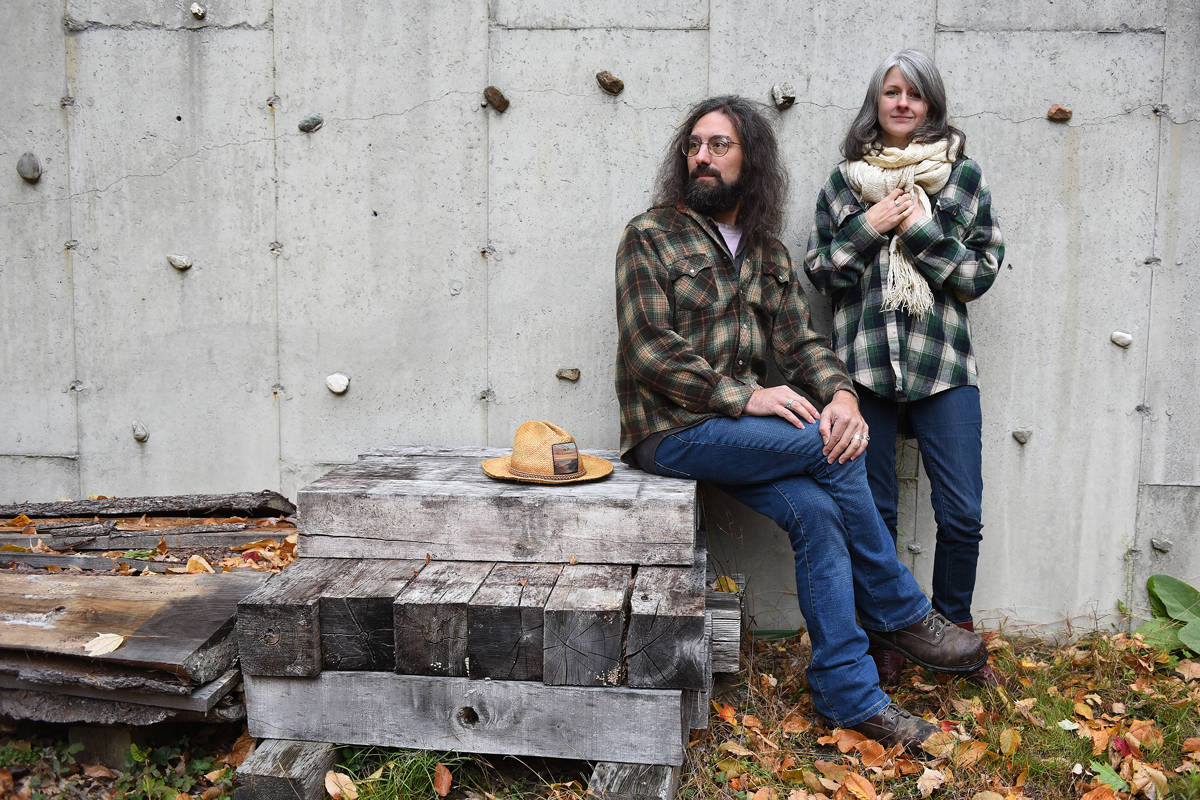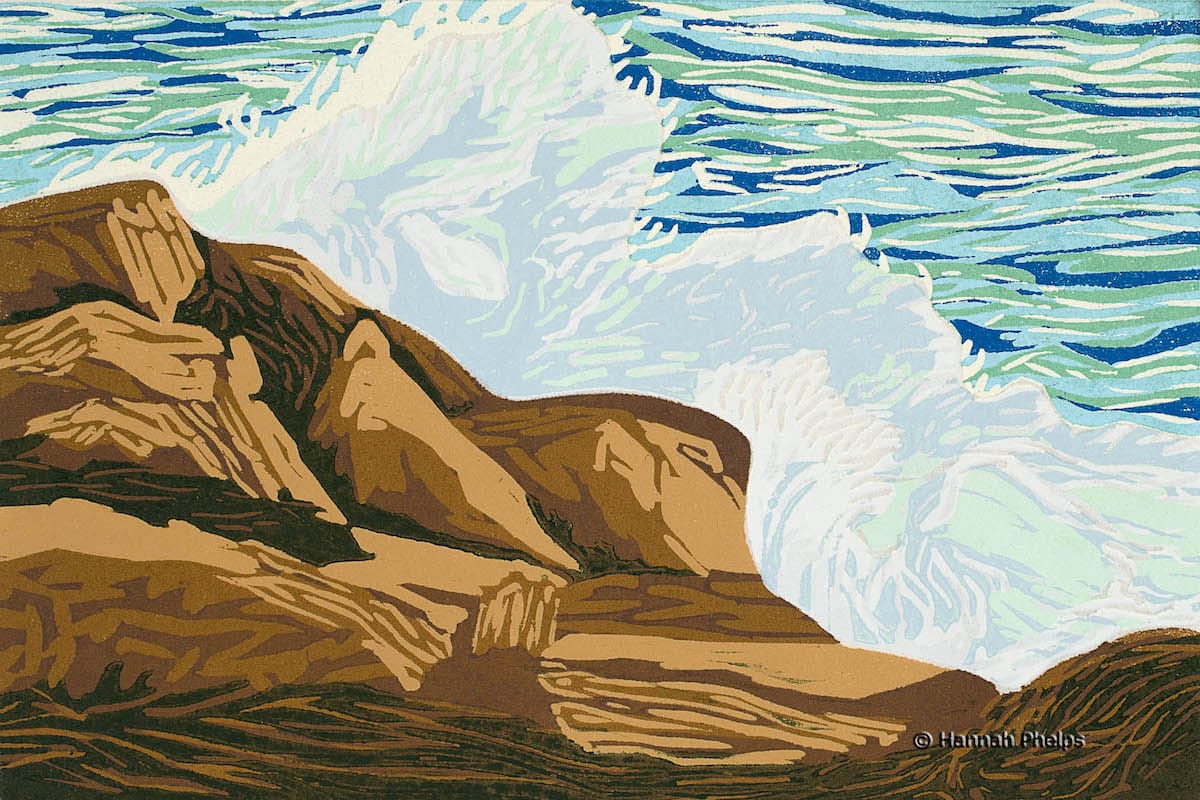Eben Kling’s humanoids are spot magnified – over and under-sized features in impossible positions and you move with them.
A series of sketches by the artist Eben Kling depicts scenes from the TV western Gunsmoke: James Arness, the rugged actor who starred as Marshal Matt Dillon, roughing up a boy; a gunman peering from behind a lookout who is either sweating profusely or sobbing; a cowboy grimacing while getting gut punched by an attacker whose torso twists in slow motion.
Drawn against minimal backgrounds in colorful pencil and crayon, these pictures are both dramatic and cartoonish—ironic in an N. C. Wyeth-meets-National Lampoon way.
“My father was kind of a tough guy,” Kling says. “He would watch Gunsmoke, and I would sit on the floor drawing. The images are sort of redacted and edited through my hand. I was picking at the machismo.”
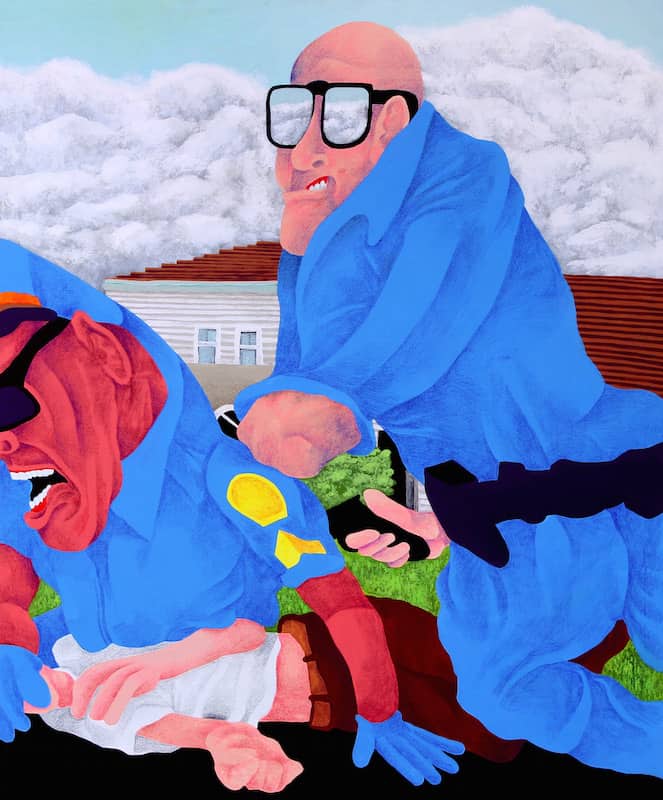
Botched Response 2015 | 61×50 Acrylic and Pencil on Canvas
Unlike the Gunsmoke sketches, Kling’s paintings lean more abstract. From party scenes to protests, they are trippy narratives composed of often contorted or fragmentary figures with meaty hands and feet, mouths agape, angular sunglasses, baseball caps with foam-like brims, fat cigarettes, beer cans, and pizza boxes. There’s a dash of R. Crumb and a pinch of Terry Gilliam in Kling’s style, humor, and social commentary. But they’re blended into an already-rich batter of latchkey-kid angst, visionary talent, and screw-it-all experimentation.
“A lot of those images were made as I was sitting in public, drawing,” he says. “I was feeling confused about what I was looking at.”
Over the past six years, the 28-year-old has created an impressive body of work—painting, drawing, sculpture, collage, illustration, and commercial art—featured in dozens of shows. His master of fine arts show at UMass Amherst in May attracted 200 people. Artspace, a New Haven, Connecticut, gallery and nonprofit for emerging contemporary artists, chose Kling as its 2015–2016 artist-in-residence.
The works in Kling’s MFA show evolved out of “chance strategies—a very John Cage thing,” he says. For example, he created compositions of random digital images using Photoshop’s auto-align feature, then “flattened and rendered them in [his] own hand” as brightly colored paintings.
Kling likes portraying, and employing, the mundane stuff of everyday life. He’ll build a cheeky collage around a strategically placed piece of Day-Glo card stock. His sculpture is just as irreverent; his preferred media are trash and cardboard. He once collaborated on a show, Odd Job, in the office of an abandoned tech company, making sculpture in which he personified casually assembled piles of office detritus by giving them limbs and heads.
“It looked like [the company] left in the middle of a Christmas party,” Kling says. “There was a strange, purgatorial feel to it.”
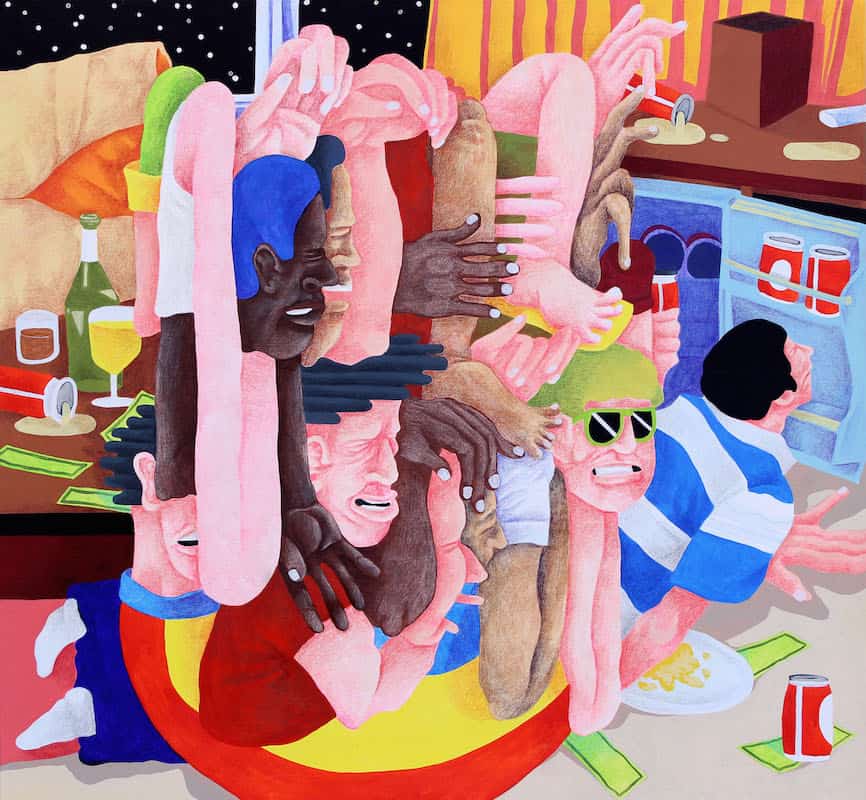
Floating Cluster Fuck 2015 |48×48 Acrylic and Pencil on Canvas
Another sculpture series consists of figures partially cut out of cardboard. They lie on the floor, their limbs flopping about in tortuous positions. Or, Kling will fasten a cardboard figure to a wall, adding objects like a pair of tighty-whities and a pistol, with a pile of papier-mȃché beer cans and pink dismembered limbs littering the floor below. It’s like stop-motion animation come to life.
I talked to Kling about his work and life just after he and his girlfriend, artist and Royal Frog Ballet performer Chelsea Granger, moved into his late father’s house in the Connecticut shore town of Branford, near New Haven. He’s the fourth generation of Kling to live there.
“I feel like a steward. The house functions as a vibrating museum of my family’s history,” he says. The statement sounds like a platitude, but, as usual, it is “redacted and edited” through the artist’s hand. A series of photos on Kling’s Tumblr feed is simply captioned: “Images made from my late father’s pornography and his landscape photography.”
LC: Your dad died a couple of years ago. The Gunsmoke drawings are connected to him?
I didn’t want to be sentimental about our relationship, but I felt compelled to make work about my father’s death. James Arness is a catalyst to talk about my own relationship with my father— through power struggles, machismo, complicated male-type things. But it’s tempered with absurdity and a sense of humor.
LC: Moving to New Haven was sort of mission for you, huh? You must have been psyched to get the artist-in-residence gig at Artspace.
Yeah. [Artspace] is a cultural mothership of creative people in New Haven, and it’s part of a block of low-income housing. I can’t think of a more appropriate way to integrate back into New Haven. I’m committed to being here. I was born in New Haven. I moved out at a young age—my parents divorced when I was four. But I gravitated back to it.
Before I was 18, I lived in 18 different apartments. It was kind of funny—a lot of times, the new apartment was just literally down the street, or upstairs. [Having grown] up in southern Connecticut, [I find] there’s something alluring about New Haven. It’s a city. I went to Amity High School in Woodbridge, but I was also commuting to New Haven every day to go to an arts magnet school.
I wasn’t very good in [traditional] school. I spent a lot of time drawing during my classes and was always scolded for it.
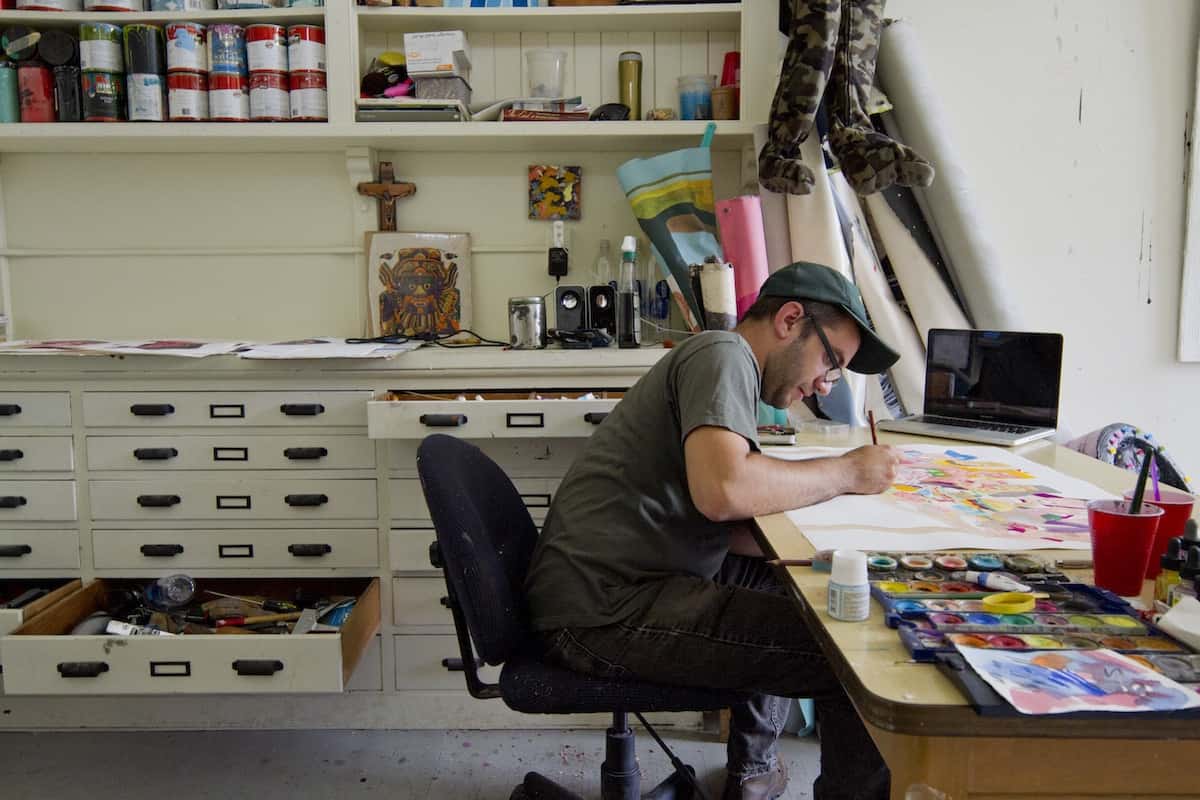
Eben Kling | Photo by Paul Teeling
I had a very influential teacher, Brian Flynn, in high school. We’re still in close contact. He was a very encouraging guy, and he liked to challenge me. He inflated my ego when I needed it. He was the one who convinced me to keep doing art. I don’t think my mother ever wanted me to go into the arts. My father really tried to talk me out of it. It wasn’t until college that he came around.
LC: You went to an arts college?
My first year was at Hartford Art School with 15,000 other students. I was an arrogant person. I thought I had some chops; I thought I was going to be an artist. My professors knocked me down a few pegs. I didn’t connect with the city. I went to HAS because my girlfriend went there. Then my girlfriend left me, and my car got stolen. That’s when I transferred to Montserrat [College of Art in Beverly, Massachusetts]. It was a nice change of speed. At the time, I needed that sort of intimacy.
I started off in illustration. While I was at Montserrat, I was getting a lot of work as an illustrator. I worked for an after-school science program in Cape Ann. It was steady work that paid me well, but it was a funny job. I made incredibly convoluted images. There would be a historical
anecdote, like one about the development of hydraulic electrical motors just after World War II. In that illustration, there were figures in the foreground—desperate people making a radio out of an old washing machine—and a war scene in the background. [The program managers] would assign me five images in two days. It was probably the most unprofessional experience I could have had out of the gate.
I switched my major to printmaking. Peers of mine who were inspiring to me happened to be in that department. I was doing lithography, acid etching, wood prints. It was like a big survey. Everybody had to work around each other—it was a shop. There’s something very colorful and enthusiastic about being in a laboratory together.
LC: What did you do after you graduated?
I moved down to the Pioneer Valley right after Montserrat. There were close to 12 Montserrat alumni living there. But many of my friends and peers were going to New York and California. Bright-eyed, bushy-tailed recent art grads. I didn’t want to move to a large metropolis.
LC: What made you decide to go back to school and get an MFA?
I was walking up the stairs of the restaurant I was working in as a prep cook, and I was carrying a 15-pound sack of potatoes. I hurt my back. I was tired, working long hours in the service industry. I decided I wanted to go back to school.
I always had a suspicion I wanted to teach—the most inspiring people in my life have been teachers. At UMass, that suspicion was validated. Maybe not teaching in the most conventional sense . . . more like collaboration. Teasing out ideas with other human beings. I’m more interested in that than being some sort of famous artist.
LC: Really? You might not have much choice in the matter. You’re prolific. Let’s talk about your work. You do collages, and you also do paintings that look like collages.
I did a small series of images that were a mix of painting, found objects, and cut material. I thought, “How can I make an image that is familiar to me without paint?” I was sick of painting.
I had spent a lot of time going through my father’s house. He was a hoarder. I was feeling the burden of being the only son; the burden of his belongings, his trash. That’s when I began experimenting with sculpture. I think about Claes Oldenburg’s The Store. He rented a bodega and made objects that he sold. I started doing similar things. I made symbols for beer cans out of ventilated foam. My studio started to look like my father’s garage.
Even some of my paintings have a sort of stitched-together quality. Certain images might be . . . I haven’t figured out what they are. Dissociative forms, people’s behavior, motivations. I was feeling cynical, blank, looking through people’s actions and their objects. I was intentionally using divergence tactics . . . not being able to see where something ended.
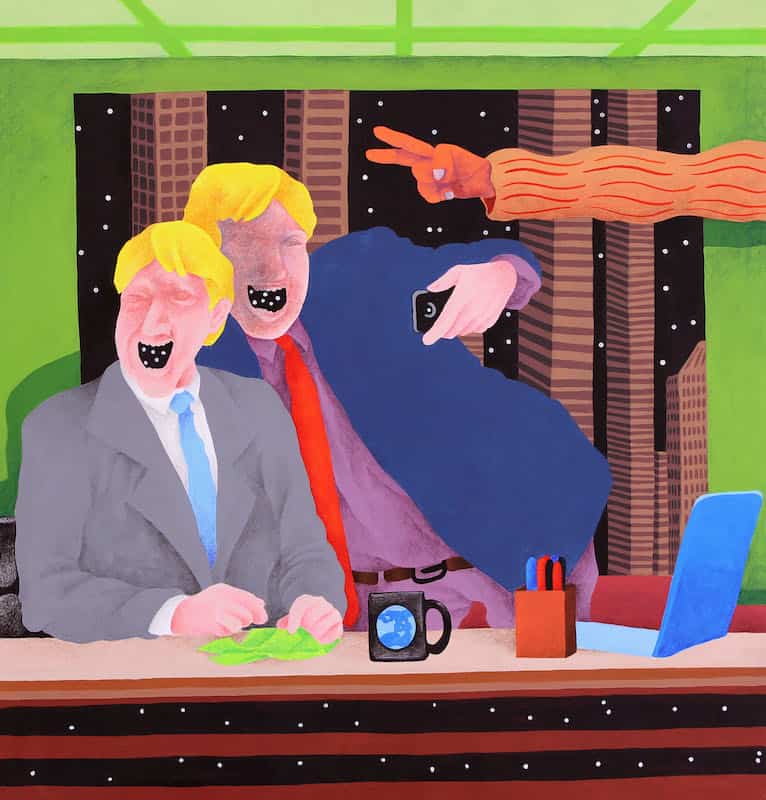
Up All Night for Late Night 2015 | 48×48 Acrylic and Pencil on Canvas
LC: Beer cans and cigarettes are a motif in your work.
They’re symbols of debauchery. I smoke cigarettes and drink a lot of beer. I go to bars and socialize in that way. It’s part of my life. I hark back to one of my favorite painters, Philip Guston. [The motifs are] a wink to him. When I go back and think about those paintings more, there’s a sort of condemnation of debauchery.
In graduate school, I would sit in the studio and listen to Democracy Now!, then go out into the zoo of UMass. Or I would sit in a mall and draw people going up and down on an escalator for about an hour. Time-lapsed images of faces. Everybody’s on their cell phone, eating a giant hot dog, drinking sodas, and buying sneakers. There’s a lot of consumerist angst [in those images]. I felt like I was holding a mirror up. But I would also implicate myself at the same time.
LC: What about your influences? You’ve mentioned R. Crumb and Philip Guston. I get hints of Terry Gilliam in your work.
Everything is derivative. The responsibility of an artist is not to avoid that lineage but insert [oneself] into it, modernize it. I love [Gilliam’s] films. He’s in the soup stock. A lot of my influence comes from television and cartoons. I was a latchkey kid—free to watch as much TV as I wanted. I still watch cartoons all the time. There’s something about the expressiveness and plasticity of cartoons that is an established tool for exaggeration. It’s a really good strategy to make your point and push it over the edge.
I think about when I started making cardboard cutout images. They were kind of pathetic. They had no structural integrity. They would bend in ways that were eerily reminiscent of human joints—figures collapsing over themselves. Some of my peers refer to them as Transformers. It’s as if they went through a time machine and came through the other side compromised.
LC: One cool project you’ve worked on recently is Jedediah Berry’s The Family Arcana, which the project’s website describes as “a story about a haunted family, published as a poker deck and written to be read an infinite number of ways.”
I’m doing the illustrations for it. It’s a story and a functional deck of cards. Jed and I used to live together in Amherst. I’ve also dabbled in tattoo artistry for a friend who has his own tattoo shop.
Now that school is over, I’m kind of let off the leash. I feel like a real boy again.
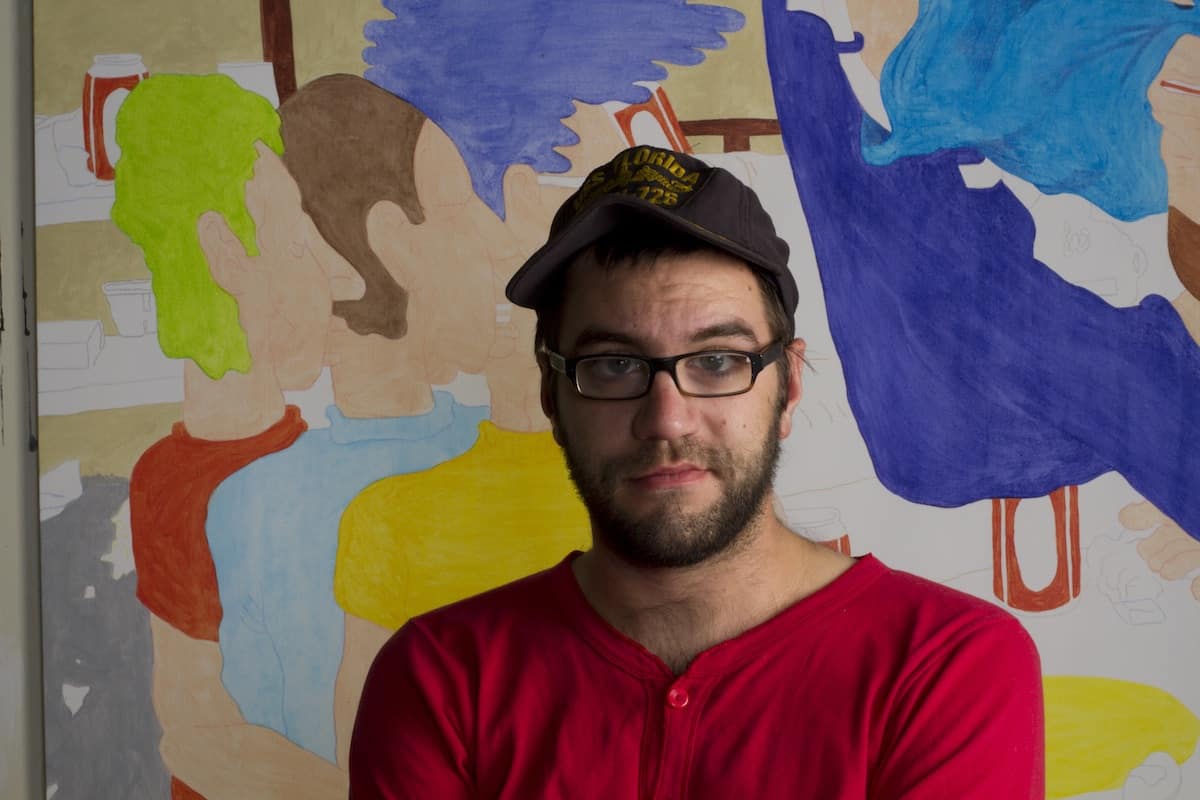
Eben Kling | Photo by Paul Teeling
Kling’s Artspace residency culminates in a solo show. Humanoids, an exhibition of paintings and drawings by Eben Kling opens Oct 7, 2016 – Nov 10, 2016.

